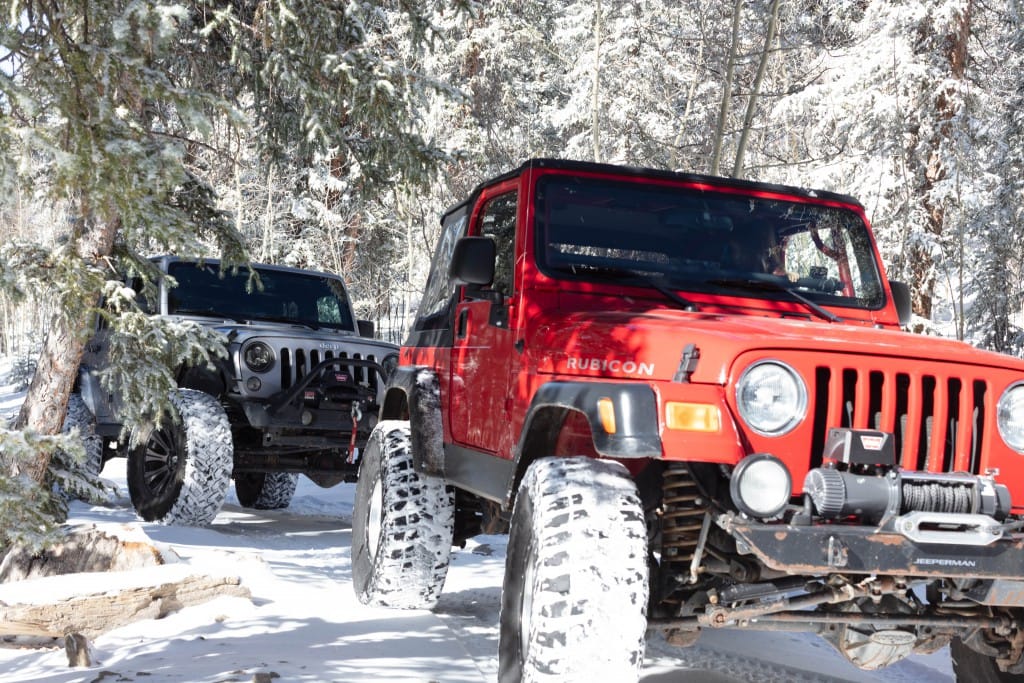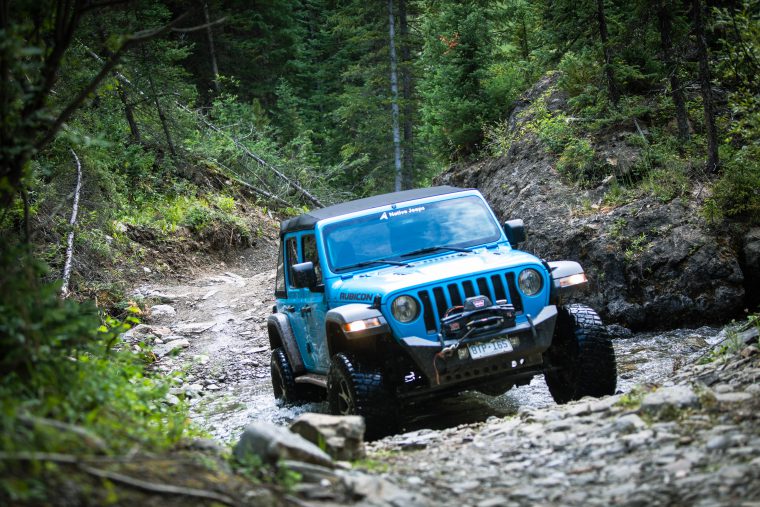The Ultimate Guide to Snow Wheeling – 7 Expert Tips

Snow wheeling is a great way to enjoy the outdoors in the deep freeze of winter months.
But for those new to this type of wheeling, it can be a quick mistake that turns a great day into disaster. Here are some basic tips for those ready to hit the trails as the snow is melting:
Tip #1 – Don’t harm the environment
First and foremost, the spring time is a sensitive time for Mother Nature and we must take steps to reduce or eliminate our chances of harming the environment.
After all, we love the scenery and want to see the same beauty year after year, right?
- Stay on Trail
- Don’t go around snow banks
- Respect the water
- Don’t expand mud holes
- Take steps to reduce erosion of banks and stream crossings by not spinning tires or undercutting stream banks
- Respect nature and the next generation
- Baby animals are emerging and exploring their backyards and aren’t smart to roads yet
Tip #2 – When to use gas vs finesse
There is a very fine line in snow wheeling between using finesse of the gas pedal, and using too much.
Snow will give the vehicle a feeling of resistance as the tires drop into the snow surface and must be pushed up and against the snow to move forward.
The further the tires sink the more force is required to overcome the “hill” in front of the tires.
This is feeling of resistance or drag is increased as other parts of the vehicle contact the snow – differentials, bumpers, etc.
You must respond with enough gas to overcome this resistance and keep momentum moving forward.
However, giving too much gas can quickly cause you to lose control and slip off the road surface.
It is important to note that any stopping in a snow bank will likely prevent you from moving forward again and probably get the vehicle stuck.
Tip # 3 – Understanding snow compaction
Snow compaction will have a dramatic effect on the drive-ability of the snow surface (or large remaining snow banks).
During the winter most roads in Colorado are used by snowmobiles, snowshoers and even ATVs /UTVs /Jeeps if the season allows. All this use results in a compacted snow surface.
Driving on such compacted banks is relatively safe and helps to prevent getting stuck. This is because compacted snow holds up much greater weight than loose snow – so your tires won’t sink.
However, compacted snow can also be deceiving and dangerous. At the point where the snow loosens, a Jeep can unexpectedly slide off the compacted snow into the soft slush sideways, potentially causing a rollover.
Understanding where the compaction is and isn’t is key to avoiding this situation.
Tip # 4 – Managing changing snow conditions
Snow and ice will change through the day (and night) depending upon multiple factors like temperature, humidity and how sunny it is.
Be cautious and mindful of these conditions as you venture through the day. The changes may impact your ability to safely navigate the same area(s) at different parts of the day.

Tip # 5 – How to cross a side slope
Use extreme caution crossing snow banks that are remaining on the sides of slopes.
A snow bank on a slope can quickly result in a Jeep sliding sideways down a steep hillside.
Drivers should investigate any snow bank on a slope on foot before attempting to cross it.
These accidents happen quickly and have bad result, so be sure of your safety before trying to cross.
Tip # 6 – Going up vs coming back down
Traction on the same vehicle, with the same tires, on the same road will be different when the vehicle is traveling up a slope vs traveling down the same slope.
Drivers should be thinking as they prepare to ascend or descend a slope – “Can I get back up/down this?”
When ascending a slope, it is of utmost importance to maintain momentum upwards. Finding the previously mentioned balance between power and finesse is crucial to successfully climbing deep snow.
Be fluid with the wheel and accept a certain amount of “drift”.
When descending use low gears and the gas, as opposed to the brake, will help you keep control.
If you feel the vehicle slipping forward or losing traction, your first step will be to apply a little gas and turn into the slippage. This will correct the vehicles path and re-stablish traction, instead of sliding.
This might be scary at first, but you will regain traction and control much quicker this way.
This is actually physics at work – the breakaway friction force (the force to start an object sliding) is much greater than the dynamic frictional force- the force required to keep an object sliding once started.
Tip # 7 – Working as a team to avoid getting stuck
Always travel with a partner when snow wheeling – you don’t want to risk getting stuck alone! Work as a team and avoid getting stuck together.
Only allow one vehicle at a time to cross a snow bank, or ascend/descend a steep snowy hill.
One vehicle should stay in a safe area with copious traction to aid the stuck vehicle if it occurs. Once the lead vehicle crosses, the follow or recovery vehicle can cross and continue on.
It is important to know the lengths of your recovery gear and realize that a 25’ recovery strap will do little good for a vehicle stuck 75’ into a snow bank. Know your limitations and stay within them.
Remember to be properly equipped and prepared for mountain travel, getting stuck, and possibly staying awhile. Double-check your recovery gear before leaving, and don’t forget the snow shovel!!
Summary
Snow wheeling is one of the most fantastic winter sports out there. Tbd.




